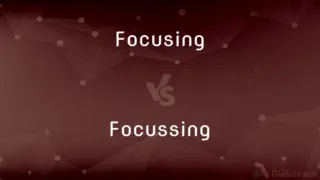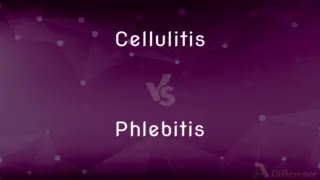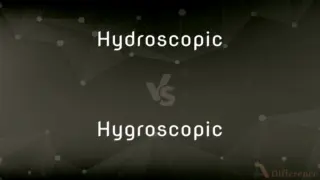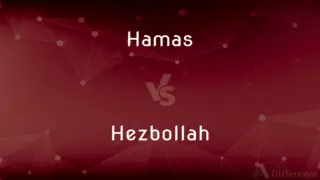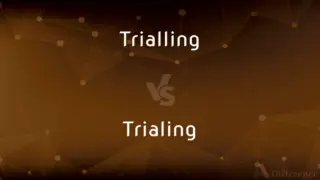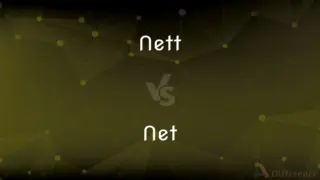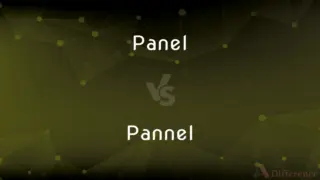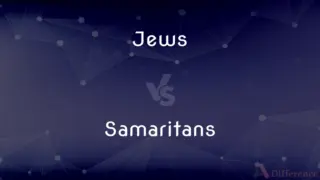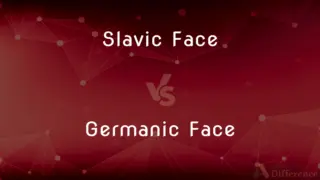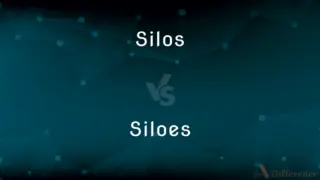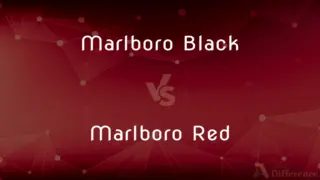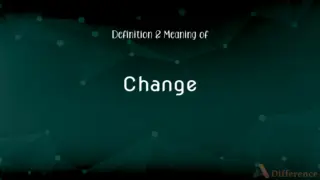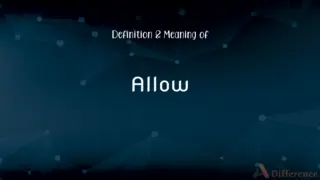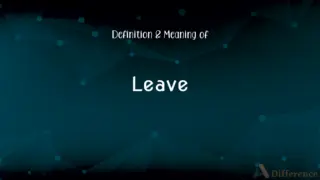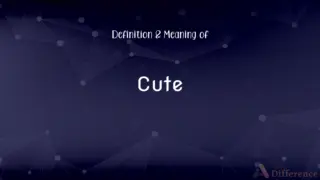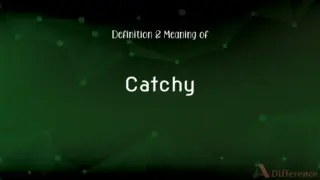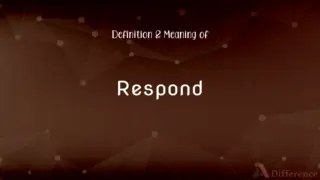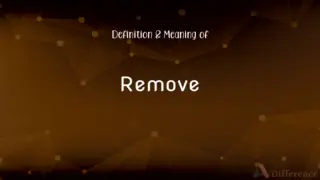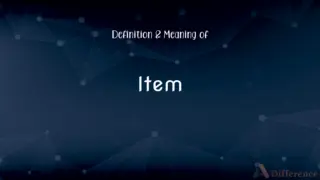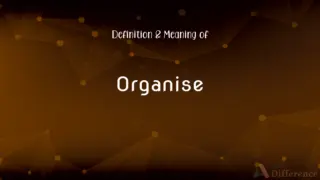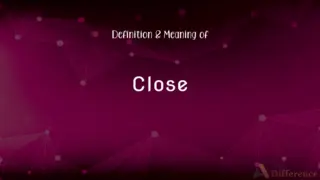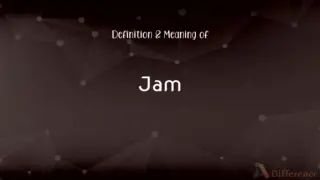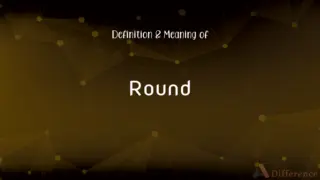Plasmid vs. Chromosome — What's the Difference?
Edited by Tayyaba Rehman — By Fiza Rafique — Updated on September 29, 2023
A Plasmid is a small, circular DNA molecule found in bacteria, while a Chromosome is a long DNA molecule with genes, present in the nucleus of eukaryotic cells.
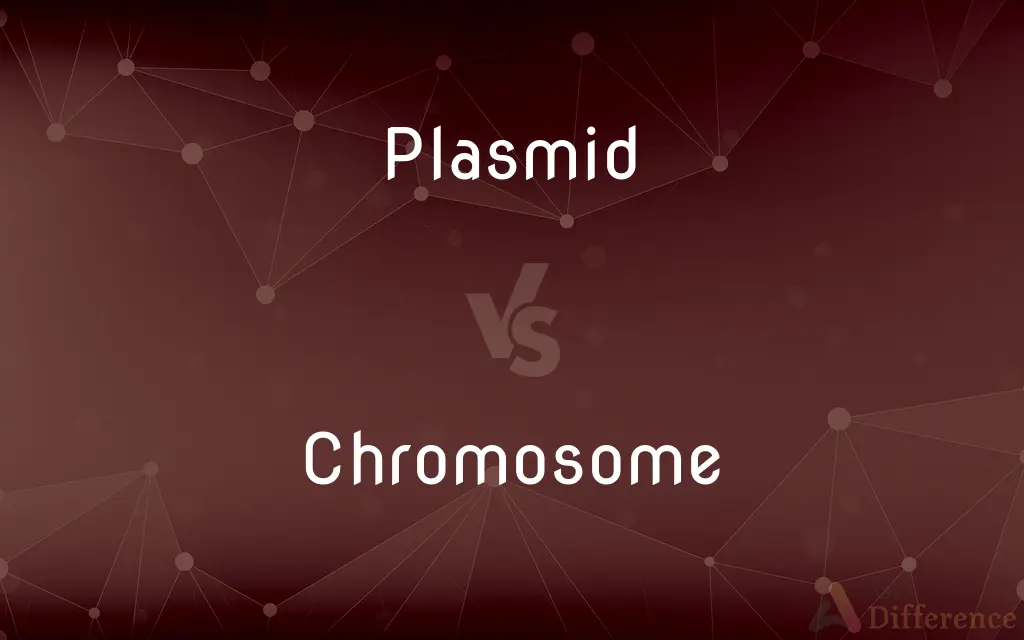
Difference Between Plasmid and Chromosome
Table of Contents
ADVERTISEMENT
Key Differences
Plasmids are often found in bacteria, carrying a few genes that can provide the bacteria with genetic advantages, like antibiotic resistance. In contrast, Chromosomes contain most of an organism's genetic information and are found in the nucleus of eukaryotic cells.
Structurally, a Plasmid is typically circular and is not involved in cell replication the way chromosomes are. A Chromosome, on the other hand, is a linear DNA molecule and plays a direct role in cell division.
Functionally, Plasmids are generally not essential for the basic survival of the bacteria, but they can confer benefits. Chromosomes, however, contain essential genetic information required for the survival of the organism.
The number of Plasmids in a cell can vary, and a single bacterium can contain multiple copies. In contrast, the number of Chromosomes in eukaryotic cells is fixed for each species, like humans having 46 chromosomes.
In genetic engineering, Plasmids are often used as vectors to transfer genes between cells. Chromosomes, however, are less commonly manipulated directly due to their complexity and the essential genes they carry.
ADVERTISEMENT
Comparison Chart
Location
Found mainly in bacteria.
Located in the nucleus of eukaryotic cells.
Structure
Typically circular.
Typically linear.
Role in Cell Division
Not directly involved.
Plays a direct role.
Essentiality
Generally non-essential for basic survival.
Contains essential genetic information.
Use in Biotechnology
Commonly used as vectors.
Less commonly manipulated directly.
Compare with Definitions
Plasmid
Can replicate independently in a cell.
The Plasmid multiplied rapidly within the bacterial cell.
Chromosome
Located in the nucleus of eukaryotic cells.
The Chromosome structure is vital for inheritance.
Plasmid
Often used as vectors in genetic engineering.
Scientists used the Plasmid to introduce a new gene into the bacteria.
Chromosome
Essential for the survival and reproduction of organisms.
Abnormalities in a Chromosome can lead to genetic disorders.
Plasmid
Non-essential genetic elements found in bacteria.
This Plasmid provides the bacterium with a survival advantage.
Chromosome
Plays a role in cell division and inheritance.
During mitosis, each Chromosome replicates to ensure genetic continuity.
Plasmid
A small, circular DNA molecule separate from chromosomal DNA.
The bacteria carried a Plasmid with antibiotic resistance genes.
Chromosome
A long DNA molecule containing genes.
Each human cell has 46 Chromosomes carrying genetic information.
Plasmid
Can confer special properties like antibiotic resistance.
The presence of the Plasmid made the bacteria resistant to penicillin.
Chromosome
Determines the genetic traits of an organism.
A specific Chromosome carries the gene for eye color.
Plasmid
A plasmid is a small, extrachromosomal DNA molecule within a cell that is physically separated from chromosomal DNA and can replicate independently. They are most commonly found as small circular, double-stranded DNA molecules in bacteria; however, plasmids are sometimes present in archaea and eukaryotic organisms.
Chromosome
A chromosome is a long DNA molecule with part or all of the genetic material of an organism. Most eukaryotic chromosomes include packaging proteins called histones which, aided by chaperone proteins, bind to and condense the DNA molecule to maintain its integrity.
Plasmid
A circular, double-stranded unit of DNA that replicates within a cell independently of the chromosomal DNA. Plasmids are most often found in bacteria and are used in recombinant DNA research to transfer genes between cells.
Chromosome
A linear strand of DNA and associated proteins in the nucleus of eukaryotic cells that carries the genes and functions in the transmission of hereditary information.
Plasmid
(cytology) A loop of double-stranded DNA that is separate from and replicates independently of the chromosomes, most commonly found in bacteria, but also in archaeans and eukaryotic cells, and used in genetic engineering as a vector for gene transfer.
Chromosome
A circular strand of DNA in bacteria and archaea that contains the hereditary information necessary for cell life.
Plasmid
A piece of DNA, usually circular, functioning as part of the genetic material of a cell, not integrated with the chromosome and replicating independently of the chromosome, but transferred, like the chromosome, to subsequent generations of daughter cells. In bacteria, plasmids often carry the genes for antibiotic resistance; they are exploited in genetic engineering as the vehicles for introduction of extraneous DNA into cells, to alter the genetic makeup of the cell. The cells thus altered may produce desirable proteins which are extracted and used; in the case of genetically altered plant cells, the altered cells may grow into complete plants with changed properties, as for example, increased resistance to disease.
Chromosome
A linear arrangement of condensed DNA and associated proteins (such as chaperone proteins) which contains the genetic material (genome) of an organism.
Chromosomes store genetic information.
Plasmid
A small cellular inclusion consisting of a ring of DNA that is not in a chromosome but is capable of autonomous replication
Chromosome
One of the minute bodies into which the chromatin of the nucleus is resolved during mitotic cell division; the idant of Weismann.
Chromosome
A threadlike body in the cell nucleus that carries the genes in a linear order
Common Curiosities
Are Plasmids used in genetic engineering?
Yes, Plasmids are commonly used as vectors in genetic engineering.
Can Plasmids carry genes for antibiotic resistance?
Yes, Plasmids can carry genes that make bacteria resistant to antibiotics.
Do Chromosomes determine an organism's traits?
Yes, genes located on Chromosomes determine an organism's genetic traits.
Are Plasmids present in human cells?
No, Plasmids are typically found in bacteria, not in human cells.
What role do Chromosomes play in cell division?
Chromosomes play a crucial role in ensuring genetic continuity during cell division.
Are Plasmids essential for bacterial survival?
Generally, Plasmids are non-essential, but they can provide survival benefits.
What is the primary function of a Plasmid?
Plasmids can confer specific advantages to bacteria, like antibiotic resistance.
How many Chromosomes do humans have?
Humans have 46 Chromosomes in each cell, except for gametes.
Do all cells have the same number of Chromosomes?
No, the number of Chromosomes varies among species.
How do genetic disorders relate to Chromosomes?
Genetic disorders can arise from abnormalities or mutations in Chromosomes
Share Your Discovery

Previous Comparison
Primal vs. Primordial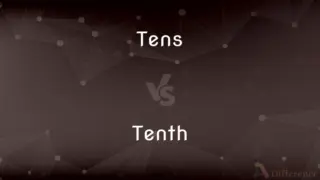
Next Comparison
Tens vs. TenthAuthor Spotlight
Written by
Fiza RafiqueFiza Rafique is a skilled content writer at AskDifference.com, where she meticulously refines and enhances written pieces. Drawing from her vast editorial expertise, Fiza ensures clarity, accuracy, and precision in every article. Passionate about language, she continually seeks to elevate the quality of content for readers worldwide.
Edited by
Tayyaba RehmanTayyaba Rehman is a distinguished writer, currently serving as a primary contributor to askdifference.com. As a researcher in semantics and etymology, Tayyaba's passion for the complexity of languages and their distinctions has found a perfect home on the platform. Tayyaba delves into the intricacies of language, distinguishing between commonly confused words and phrases, thereby providing clarity for readers worldwide.

